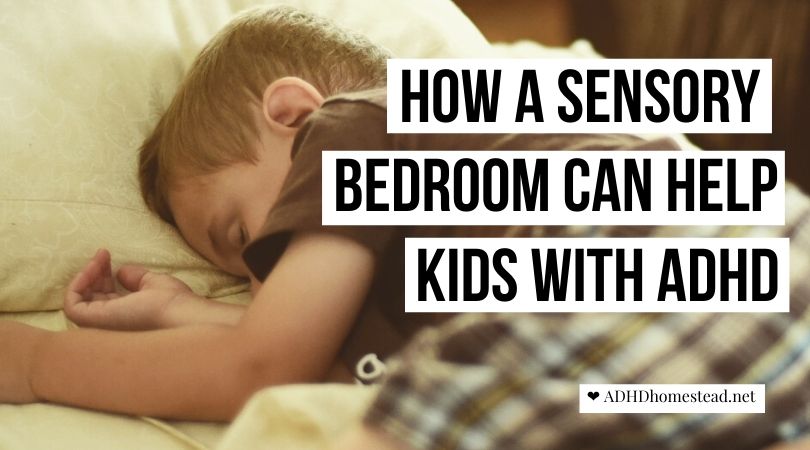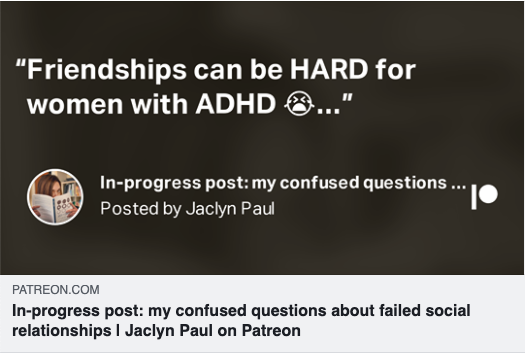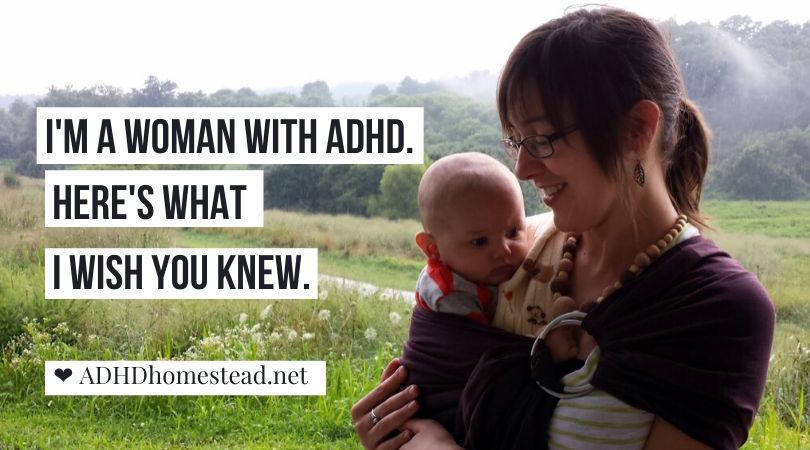This week I’ve been thinking a lot about two things: social relationships and physical surroundings. My shares to the ADHD Homestead Facebook page reflect that. Here are a few links about creating more peaceful, ADHD-friendly surroundings — and giving ourselves more credit for the improvements we make — plus a couple ruminations on the realities of being a woman with ADHD.
Use a sensory bedroom to give children with ADHD a personal oasis.
Having the whole family home over the past couple months has highlighted the need for sensory retreats. I’ve become keenly aware of everyone’s habitual noises: monologuing, video games, conference calls, excessive throat clearing, loud chewing, bumping a knee against the wall as one reads in bed. Some people with ADHD find ambient sounds very distracting. Others are what some call “sensory defensive.” They become overloaded by what most would consider normal and manageable levels of sensory input.
Kids are at a disadvantage because they haven’t learned to recognize or mitigate these challenges yet. They benefit from us teaching them how their brains work and what they need, but we can also provide immediate short-term relief. A child’s bedroom is a great place to lay the foundation for effective self-care. At 7, my kiddo will now sometimes go to his room proactively when he feels overwhelmed or upset. When he comes out, it’s like he’s gone through a hard reset.
Families now have a prime opportunity to re-assess how children’s bedrooms ease or exacerbate ADHD symptoms. We don’t need to invest a lot of money or go out to the store. Many improvements involve removing stimuli, not adding them. This is well worth the effort. Sensory overload can cause serious problems. Any respite we can provide will improve household relations 😉
In-progress post: my confused questions about failed social relationships | The ADHD Homestead Patreon
I’ve been sharing in-progress posts on my Patreon for folks to take a peek, comment, and ask questions. I wanted to share the gist of this one with you all as well.
My next book will probably dig into the softer side of dealing with our ADHD: the emotional bits rather than the practical stuff I discussed in Order from Chaos. I’ve spoken to a lot of women who always felt something was “different” or “wrong” about them. Sometimes we feel like the rest of the world is playing by a social rulebook we’ve never seen.
In the post I have planned for next week on the blog, I talk about some questions I’ve asked myself over and over:
- When did everyone else exchange numbers?
- Why does she hate me so much?
- My friends are fighting — do I have to pick a side?
- Does this mortifying video really represent how I look and sound at social gatherings?
- Why did we stop being friends?
- Why didn’t they think to include me?
I bet you have a number of your own questions.
As I’ve gotten older, I’ve learned the value of being blunt and up-front. Now I talk to my friends frankly about what I do and don’t understand. I mention the fact that I need to be told directly about things because I have a very hard time parsing unspoken social cues.
Yesterday at lunch — which has become Family Lunch during the lockdown — I was talking to my seven-year-old about remembering to check in and notice how people are feeling. What is their behavior telling you about their reactions to you? Do they feel the same way you do about the current mood and conversation, or are they trying to send you a message?
I mentioned that I must do this very intentionally and if the slightest distraction or stressor enters the picture (which is probably 99% of all conversations) I forget.
My husband gave me a funny look and said, “that’s really interesting.” Turns out, he does this automatically, without thinking. As we’ve been watching Little Fires Everywhere together, he has commented on Kerry Washington’s performance multiple times. He loves her way with facial expressions, eyes. How she can convey so much without speaking.
“It’s probably the kind of thing I appreciate more than you do,” he told me. Likewise, I can easily fold laundry while watching TV, while he struggles because he doesn’t want to miss small, fleeting facial expressions.
It’s fascinating stuff to learn about one another. I’m glad to be at a point where I can start unraveling the mysteries, the differences. Where it’s not just me alone in a world that plays by that secret rulebook.
Decluttering? Take the Before Picture! | A Slob Comes Clean
This week I posted a little decluttering time lapse video to my patron feed to demonstrate how much progress we can make in 30 minutes or less. Hopefully my patrons appreciated it, but even if they didn’t it helped *me*. I should really document every project, even if it’s a 30-minute cleanup.
With my short memory and time blindness, I don’t grasp the full effect of my efforts unless I take a before picture (or a time-lapse). I only really comprehend what’s in front of me. At the beginning, that’s the mess. By the end, I’ve lost touch with where I started.
As Dana says in this post, many of our efforts don’t culminate in a “Grand Finale of Perfection.” They just make things a little better. How much better, we won’t appreciate if we can’t compare pictures.
Or at least I won’t. Maybe people with a more visual memory are laughing at me right now. But if you’re not — take a picture before you clean up a mess! You might be surprised how much progress you made.
Change Your Visuals. Change Your Habits. | becoming minimalist
I daresay everything in this post applies even more so to people with ADHD. First of all, most of us have a raging case of Out of Sight/Out of Mind. If we don’t see it, it may as well not exist.
We’re also an impulsive lot, prone to hyperfocus, and when we’re reminded of something we want we can really fixate on it. When we want to eat or buy something, we want to do it *now*. Just now I saw my son minimize the window for his schoolwork and catch sight of his desktop background: a screenshot from a video game. Then he turned to me immediately and said, “I want to play [that game].”
The thing is, if he hadn’t seen the picture, he wouldn’t have asked about the game. I’m sure of it.
Willpower is a finite resource. It also draws on the very cognitive functions ADHD already makes more challenging. Removing willpower drains from our field of view is a cheap strategy with potentially huge payoffs.
I’m a woman with ADHD. Here’s what I wish you knew.
I got a comment from a reader this week thanking me for this post. They said it provided a timely reminder to have more patience and compassion for their spouse.
Even when we have ADHD ourselves, we can have trouble empathizing with a partner’s or child’s very different manifestation of ADHD. Knowing what it’s like for us doesn’t necessarily make it easy for us to understand what it’s like for someone else. We can never have too many reminders that actions and behavior don’t always show true intentions.
Hey there! Are you enjoying The ADHD Homestead?
Here's the thing: I don't like ads. I don't want to sell your attention to an advertising service run by the world's biggest data mining company. I also value my integrity and my readers' trust above all, which means I accept very few sponsorships/partnerships.
So I'm asking for your support directly. For the cost of one cup of coffee, you can help keep this site unbiased and ad-free.
Below you will find two buttons. The first lets you join our crew of Patreon pals and pledge monthly support for my work. Patrons also have access to my Audioblogs podcast. The second takes you to a simple donation page to pledge one-time or recurring support for The ADHD Homestead, no frills, no strings. Do whichever feels best for you!






